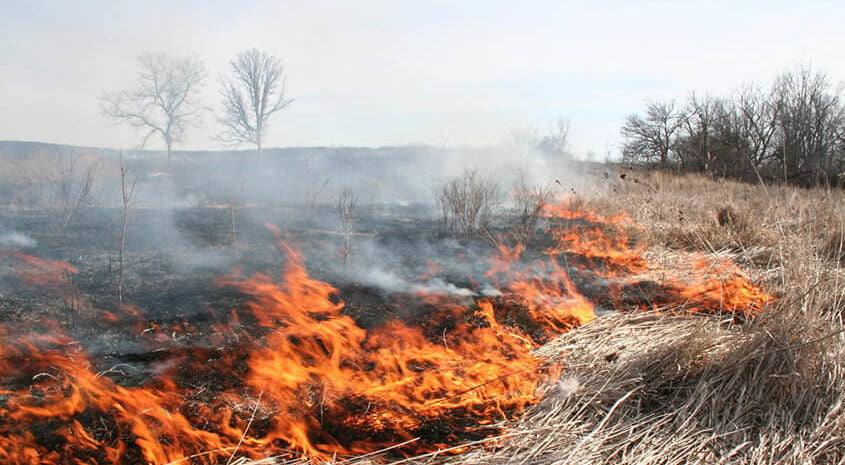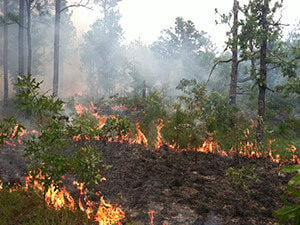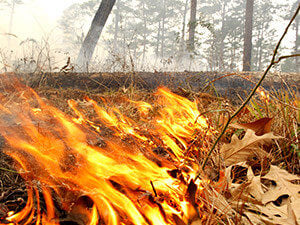Author: Bob Clyde, Land Specialist
Hunting landowners who watched the horrific California wildfires on television are keenly aware of the devastation that could happen to their own properties. It makes perfect sense to want to insulate and protect the trees and vegetation that support deer herds and wildlife. While it may sound counterintuitive, a controlled fire may be your best friend.
Controlled burns are a tried-and-true method dating back to Native Americans before European settlers arrived and continue to be used by organizations such as the USDA Forest Service. Managing forests through controlled or “prescribed” burns, allows hunting and recreational landowners to make a preemptive strike that eliminates dead, dry trees and vegetation that act as fuel for a wildfire. Think of controlled burns in this simple way: No Fuel, No Fire!
Although the use of controlled burns is — obviously — more complicated than that statement, it underscores the basic idea of using fire as a tool. The alternative may be fire feasting on your robust hunting grounds.
 Controlled Burn Basics
Controlled Burn Basics
Safety demands that controlled burns be conducted by experienced people who possess the knowledge and equipment to manage the process. Fire follows its own rules in terms of spread-rate and can quickly become dangerous. That being said, these are things you should know about controlled burns.
- Firebreaks: Before starting the burn, boundaries should be in place that cut off a fire potential uncontrolled spread. These could include a body of water, dirt road or prior back-burn among others. Firebreaks limit the burn area.
- Equipment: Devices such as drip torches are generally used to ignite the flame and field crop sprayers with a blend of water, and a fire-suppression agent is often used to extinguish it.
- Weather Conditions: Favorable weather conditions usually include 50-70 percent humidity. Excessively dry weather can result in overly hot burns. Wind gusts should be at or below 7 mph, and the temperature should generally range between 40-60 degrees.
A properly executed controlled burn utilizes techniques that fire experts commonly refer to as back, flank, perimeter, and strip-head fires among others. Enlist the help of a professional.
Benefits of Controlled Burns
Native Americans understood they could put fire to work efficiently clearing away decaying underbrush, leaves and dead trees. Their reasons are squarely in line with those of hunting landowners.
A well-implemented burn reduces and removes dead brush and leaves. This, in turn, stimulates seasonal regrowth and creates attractive food sources for deer herds. With the forest cleansed of nasty brush, active hunters can move about more freely and quietly through forests. Native Americans had a firm grasp of appropriate land management as it pertained to hunting. Native tribes relied on deer, turkey and other game for survival. That basically makes them experts.
Properly orchestrated controlled burns remain an important land management technique. By utilizes this and other environmentally conscious strategies, landowners can buoy property values and enjoy priceless hunting opportunities.




